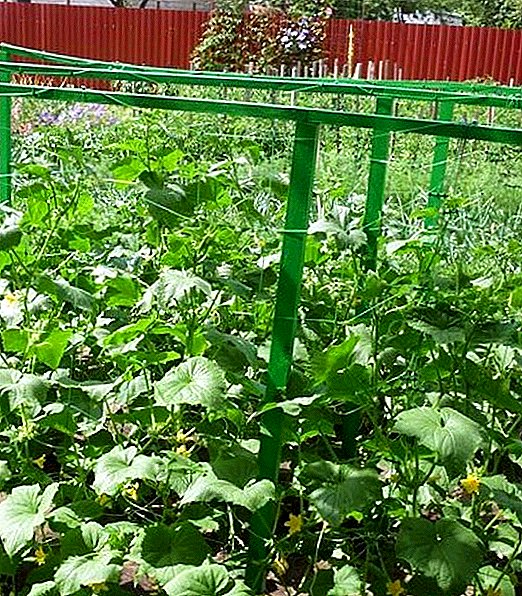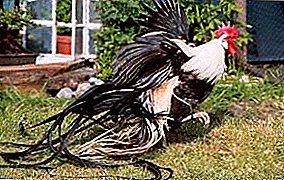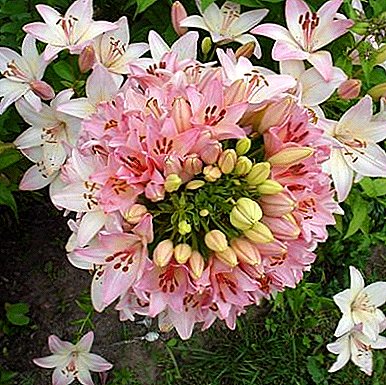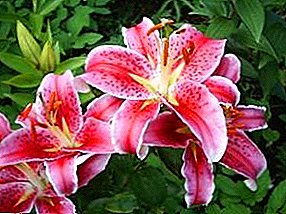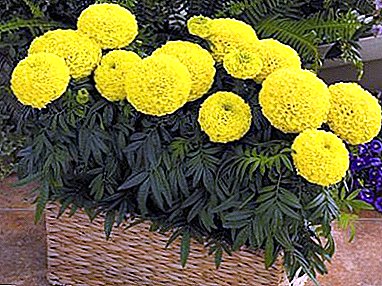
On their garden plots, many people are enthusiastically engaged in the design of flower beds. Blooming multicolored flower beds adorn these gardens. To date, many plant varieties are available for planting.
It is important to make the right choice of plants for the site and take full care of them. Among the large number of flower species, there are those that do not need very careful care and watering.
What are these flowers and their photos?
Marigold is an herbaceous ornamental plant of the Aster family, or Compositae. The Latin name of these plants is Tagetes, they are also called Chernobrivtsy, or, thanks to the English, marigold ("Gold of Mary"). Their velvety flowers are yellow, orange or red-brown. They have a developed root system and strong upright stems.
Their leaves are all tones of green. Depending on the species and varietal accessories bushes are both low and high, ranging in height from 20 cm to 2 meters (about the features of care for undersized marigolds read here). There are marigolds from America, from where in the 16th century conquistadors were brought to Spain. Then they spread in Europe, Russia, Asia Minor and other countries, almost all over the world. There are about 53 species of these plants. Learn more about marigold varieties, as well as see the description and photo of flowers here.
Now marigolds are the permanent inhabitants of most of the garden plots of Russia and Ukraine. This flower is very beautiful and unpretentious, so even beginners can grow it. Also, in addition to decorative purposes, they are used as a medicinal plant and spice. In folk medicine, flowers are suitable for improving digestion and immunity. In detail about the healing properties and contraindications to the use of marigolds, we described in this article, and about the features of the use of this plant in traditional medicine and cooking, read our material.
Flowers are rich in essential oils. In addition, marigold contains trace elements, vitamins and biologically active substances that have antiviral activity (for which they can be added to teas).
This is how marigold flowers look:



The necessary conditions
Marigolds prefer fertile light soils with low and medium PH. In general, the soil they are picky.
For marigolds on the site should be warm and sunny, while they can tolerate drought and partial shade. But they are afraid of frosts. With a cold snap, the trunk and foliage turn black and cannot recover anymore.
Can grow along the roads, as well tolerated exhaust gases. Long rains have a bad effect on the state of these flowers, because they originally come from arid areas. The period of their flowering lasts from June to late autumn.
Outdoor cultivation
If it is not possible to grow seedlings, flower seeds are sown directly in the ground. It is better to do it in the middle or at the end of May. Make a furrow depth of 5 cm, shed it with water, sow the seeds and sprinkle with earth. In a couple of weeks sprouts will appear. The marigolds will bloom by mid-summer. It should be planted in the sun. Borders can be made of them and planted along the beds, as they deter pests.
More about the nuances of growing taggetes can be found in our material.
How to care for Montenegrin at home?
Seeds can be taken from the faded bud or bought in the store. The soil needs to be heated. Land for growing mixed with sand.
 In the hot season they need to be watered every day. At another time as the soil dries. The marigolds tolerate drought well, but their appearance will be spoiled. The plant will grow better and bloom if the soil is regularly loosened. In this case, the root system will be provided with moisture and oxygen.
In the hot season they need to be watered every day. At another time as the soil dries. The marigolds tolerate drought well, but their appearance will be spoiled. The plant will grow better and bloom if the soil is regularly loosened. In this case, the root system will be provided with moisture and oxygen.
Buds that wilted gently removed. This gives room for new ones.
Since the soil in the pot is quickly depleted, the plant needs feeding. Mineral fertilizers for this can be found in specialized stores.
Possible problems
Does not bloom
Lack of flowering can cause an abundance of fertilizer and a large amount of moisture, as well as drought, lack of air in the soil or lack of natural light. Often the plant gives all its strength to the development of green mass and the ovary is absent. To activate flowering:
- The sun's rays make flowering lush. But the lighting, however, should be in moderation. Morning and evening light activates flowering. At hot noon the bush can be covered with agrofibre, creating an artificial shadow.
- It is necessary to monitor the watering. When the first buds are formed, the amount of watering decreases. Excessive moisture provokes the formation of rot and prevents flowering. It is advisable to water the flowers every 2 days with warm water.
- Fertilizers. Feed the bush only when the stem is larger than 10 cm in size. Complex fertilizers are applied only before or after the flowering process. Clean and fresh humus is not used. A mixture of nitrogen, potassium, phosphorus and trace elements is added.
- Air. The soil is loosened and weeded after each watering. Also, the soil is covered with hay and sawdust, it will reduce the evaporation of moisture.
Pests and diseases
 The fragrant aroma of marigolds and their root secretions protects against fusarium and other fungal diseases for both the flowers themselves and for everything that grows nearby. Therefore, many grow these flowers throughout the site. The health of marigolds is highly dependent on their care.
The fragrant aroma of marigolds and their root secretions protects against fusarium and other fungal diseases for both the flowers themselves and for everything that grows nearby. Therefore, many grow these flowers throughout the site. The health of marigolds is highly dependent on their care.
- In dryness a spider mite may appear (sprinkling and spraying act against it).
- From dampness fungus and decay (treated by drying and heat).
- From low temperature, humidity and too thick planting on the stems gray mold can appear in the form of dark brown wet spots.
Details on how to protect your favorite marigolds from diseases and pests, read here.
Important! Plants afflicted with the disease are best immediately destroyed, otherwise they may infect others who are healthy.
Conclusion
Marigolds are the most popular flowers among gardeners. Marigolds are planted almost anywhere, except for water bodies and dense shade. These flowers can be planted edges, for example, beds with vegetables.
In addition to their decorative function, they also protect everything that grows around them from fungal diseases. For them, moderate sunlight, sparse watering, loose soil and the use of mineral fertilizers are important.


